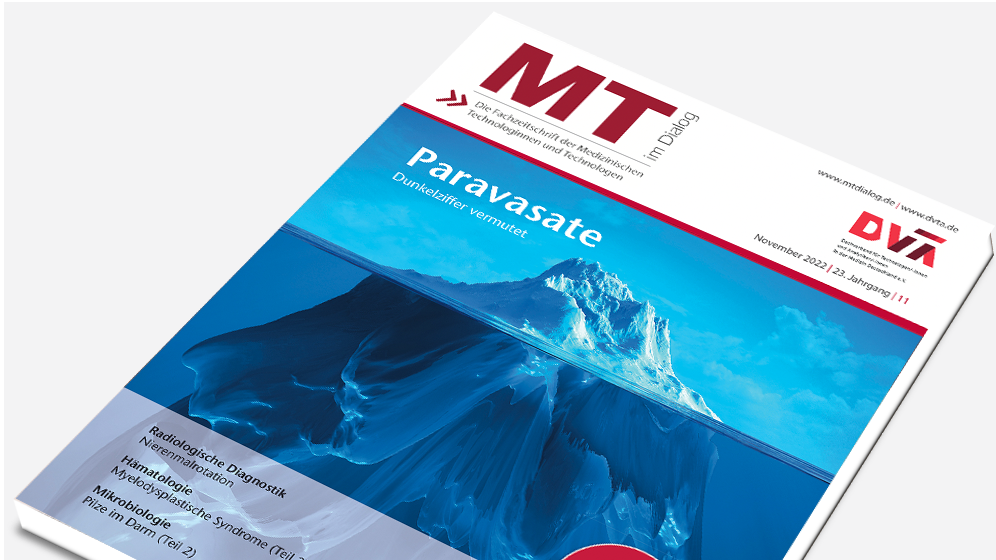Refresher: Particle-enhanced agglutination/Latex agglutination
Abstract
The latex agglutination test is used to detect antigens or antibodies. To detect the suspected antigen or antibody the sample is mixed with latex beads coated with a specific antigen or antibody. If the suspected particle is present clumping of the latex beads (agglutination) takes place.
Keywords: antigen, antibody, antigen antibody reaction, latex agglutination, syphilis
Zusammenfassung
Die partikelverstärkte Agglutination beruht auf einer Reaktion zwischen Antigen und Antikörper. Zur Sichtbarmachung der Reaktion ist dabei eine der beiden Komponenten an Latexpartikel gebunden.
Schlüsselwörter: Antigen, Antikörper, Antigen-Antikörper-Reaktion, Latexpartikel, immunologische Verfahren, Syphilis
Taken from MTA Dialog 10/2021, translated by mt g medical translation GmbH & Co KG
Dann nutzen Sie jetzt unser Probe-Abonnement mit 3 Ausgaben zum Kennenlernpreis von € 19,90.
Jetzt Abonnent werden


